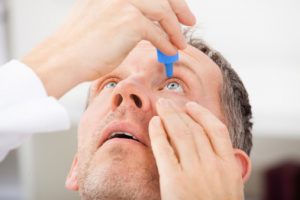 Rheumatoid arthritis and Sjögren’s syndrome symptoms such as dryness seem to be linked. Both rheumatoid arthritis and Sjögren’s syndrome are autoimmune disorders, which often occur together.
Rheumatoid arthritis and Sjögren’s syndrome symptoms such as dryness seem to be linked. Both rheumatoid arthritis and Sjögren’s syndrome are autoimmune disorders, which often occur together.
Rheumatoid arthritis is an inflammatory disorder, which can result in joint damage over time, if not treated. Sjögren’s syndrome is an inflammatory disease as well, and it is characterized by dry mouth and dry eyes as well as inflammation of the exocrine glands, which are responsible for moisture and lubrication.
Advertisement
Both rheumatoid arthritis and Sjögren’s syndrome can affect other organs as well, including inflammation of the nerves and the lining of the heart, as well as inflammation of the peripheral and central nervous system.
As with many autoimmune diseases, there is still much unknown about rheumatoid arthritis and Sjögren’s syndrome. It is believed that either condition may onset when something in the environment causes the immune system to go awry so it begins to wrongfully attack itself.
Generally, diagnosing rheumatoid arthritis and Sjögren’s syndrome is quite easy, as rheumatoid arthritis begins with swollen joints and Sjögren’s syndrome begins with dry mouth and dry eyes. But, sometimes, diagnosis can be difficult, as a Sjögren’s syndrome patient may experience joint pain and the condition may even present itself as lupus.
Sjögren’s syndrome features in rheumatoid arthritis
As mentioned, Sjögren’s syndrome may exist in rheumatoid arthritis. In one study, researchers looked at 509 cases of rheumatoid arthritis of which 74 were the cases of overlapping Sjögren’s syndrome and rheumatoid arthritis. Furthermore, rheumatoid arthritis was found to be worse in patients who also had Sjögren’s syndrome, along with higher incidences of hematological abnormalities, fever and rash, and higher count of antibodies.
Advertisement
The study concluded that rheumatoid arthritis patients with Sjögren’s syndrome have distinctive features with greater complications and systemic involvement. Lastly, disease activity is also greater in cases of rheumatoid arthritis and Sjögren’s syndrome overlap.
Managing rheumatoid arthritis and Sjögren’s syndrome
Living with rheumatoid arthritis and Sjögren’s syndrome can be quite challenging, but the good news is, they are both systemic diseases, and biologic therapy can help address both conditions at the same time. Some tips to help better manage rheumatoid arthritis and Sjogren’s syndrome include:
- Drinking water throughout the day
- Chewing sugarless gum or sugar-free lozenges and candies to stimulate saliva
- Switching to products with artificial sweeteners to prevent tooth decay
- Having frequent dental checkups
- Using an electric toothbrush
- Using fluoride products specific to dry mouth
- Brushing teeth and flossing regularly
- Avoiding sugar-containing foods and beverages between meals
- Using eye drops without preservatives
- Using lubricating eye ointments or gels at night
- Wearing wraparound sunglasses or moisture shields
- Using nasal sprays
- Resting joints when they are most painful
- Sleeping with a humidifier
- Exercising safely to relieve stiffness
- Using Vaseline or oil-based lubricants for vaginal dryness
- Taking over-the-counter pain medications for joints
- Talking to your doctor about prescription drugs that work to ease joint pain and promote saliva
These tips can help alleviate the symptoms brought on by rheumatoid arthritis and Sjögren’s syndrome. If over-the-counter or home remedies are not effective, speak to your doctor about prescription medications, which may be more effective.
